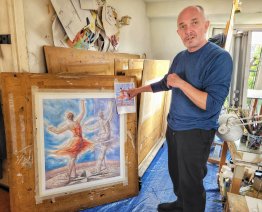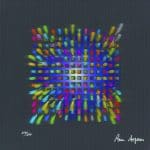Peter Nixon Offers an Artist’s Perspective on One of His Favorite Paintings

Artist Peter Nixon
We all have favorite works of art—paintings, sculptures, or other forms of artistic expression that connect with us on deep, emotional levels.
Artists have their own favorites too. It can be exciting to hear an artist talk about an artwork they treasure. Their professional knowledge of the craft often helps them expound on aspects of the art that might not be apparent to a casual onlooker.
That’s why we reached out to one of the most accomplished artists we know and asked him to take us on a deep-dive into one of his favorite paintings.
That artist is Peter Nixon, a world-class painter and draftsman, whose works revel in the highest qualities of artistic and poetic beauty.
The artwork in question is “The Conversion of Mary Magdalene” (c. 1548) by Paolo Veronese, which is currently hanging in The National Gallery in London.
Nixon was kind enough to introduce us to this remarkable painting and even provide us with his own hand-drawn sketches, highlighting some of the most interesting aspects of the work. Enjoy!
Peter Nixon on “The Conversion of Mary Magdalene” by Paolo Veronese
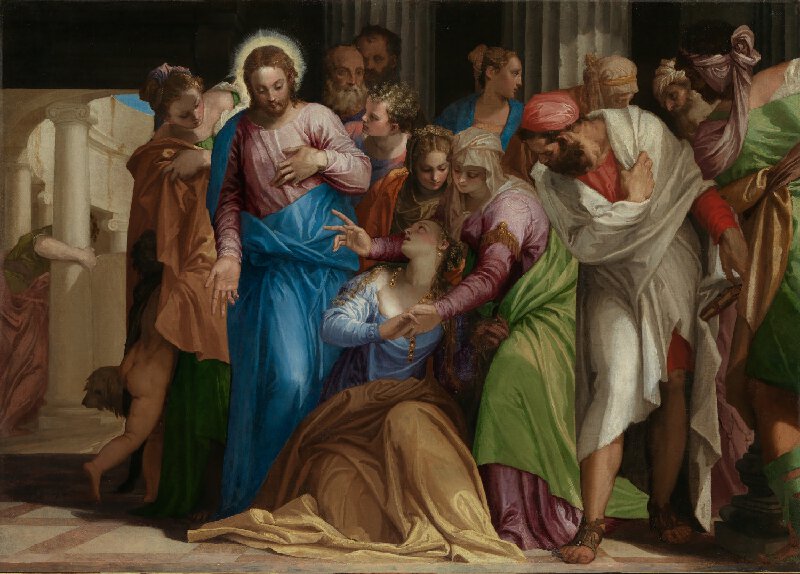
“The Conversion of Mary Magdalene” (c. 1548) by Paolo Veronese
This is how London’s National Gallery describes “The Conversion of Mary Magdalene”:
This early work was probably produced for a noble patron in Verona. There has been much debate over the subject matter, but it is now generally believed that the painting shows the conversion of Mary Magdalene.
Concerned for her sister’s spiritual health, Martha takes Mary to the Temple to hear Jesus preach. Veronese shows Mary blushing with shame and sunk to her knees as she is overcome by Christ’s words. Her fashionably low-cut dress, inappropriate for a visit to the Temple, is emblematic of her formerly sinful life centred on vanity and pleasure. Converted by this encounter Mary then turns to a life of piety. The jewellery slipping from her neck foreshadows her subsequent renunciation of worldly goods.
The painting came up as a topic of conversation between Peter Nixon and Park West Gallery Director Morris Shapiro. In Nixon’s fascinating art book, Peter Nixon: Music & Memory, Shapiro notes why he often engages Nixon in discussions about art.

“Momentary Dream” (2018), Peter Nixon
“When Peter speaks about art, those who are fortunate enough to be in his presence are equally captivated,” Shapiro says. “His insights into the art of the ages, the art of his times, and his own art are thought-provoking and revealing.”
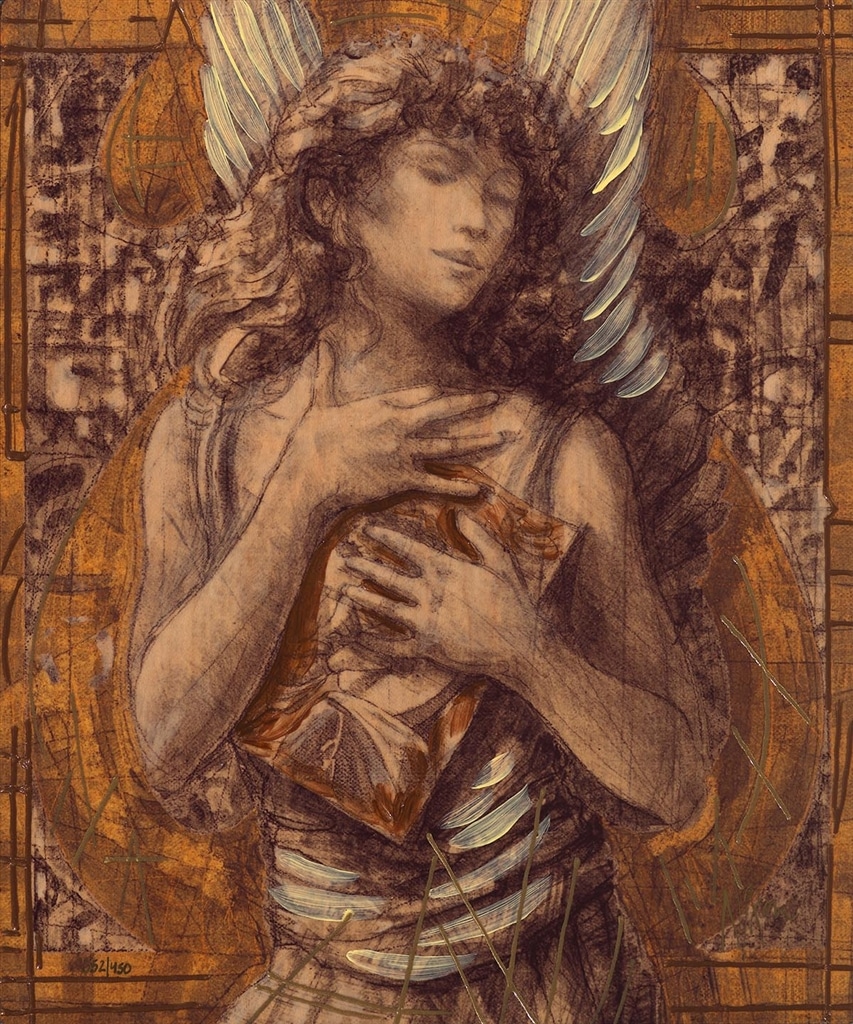
“Song of an Angel” (2018), Peter Nixon
So, when Nixon mentioned that “The Conversion of Mary Magdalene” was one of his favorite paintings, Shapiro had to know why.
Here’s what Nixon told him:
This one is near the top of my list. It’s called variously “Christ Addressing a Woman in the Temple” or “Christ Addressing a Kneeling Woman” or “The Conversion of Mary Magdalene” by Paolo Veronese, who, as you know, along with Titian and Tintoretto, was one of the triumvirate of genius High Renaissance Venetian painters.
I never tire of looking at it in the National Gallery. It is an absolute jewel of a painting and moves me to tears every time. More modest in size than Veronese’s later works, it was done when he was a young artist as a showcase of his painting and compositional skills.
The draughtsmanship and colours are beautiful, but it is the compositional choreography that really impresses—he manipulates his figures like a dance troupe. One of the pleasures of looking at this painting is following the visual sight lines formed in a series of triangles, arcs, and parabolas.
Making sense of the picture has been an obsession of mine, so I’ve created a line drawing of the compositional curves I can see.
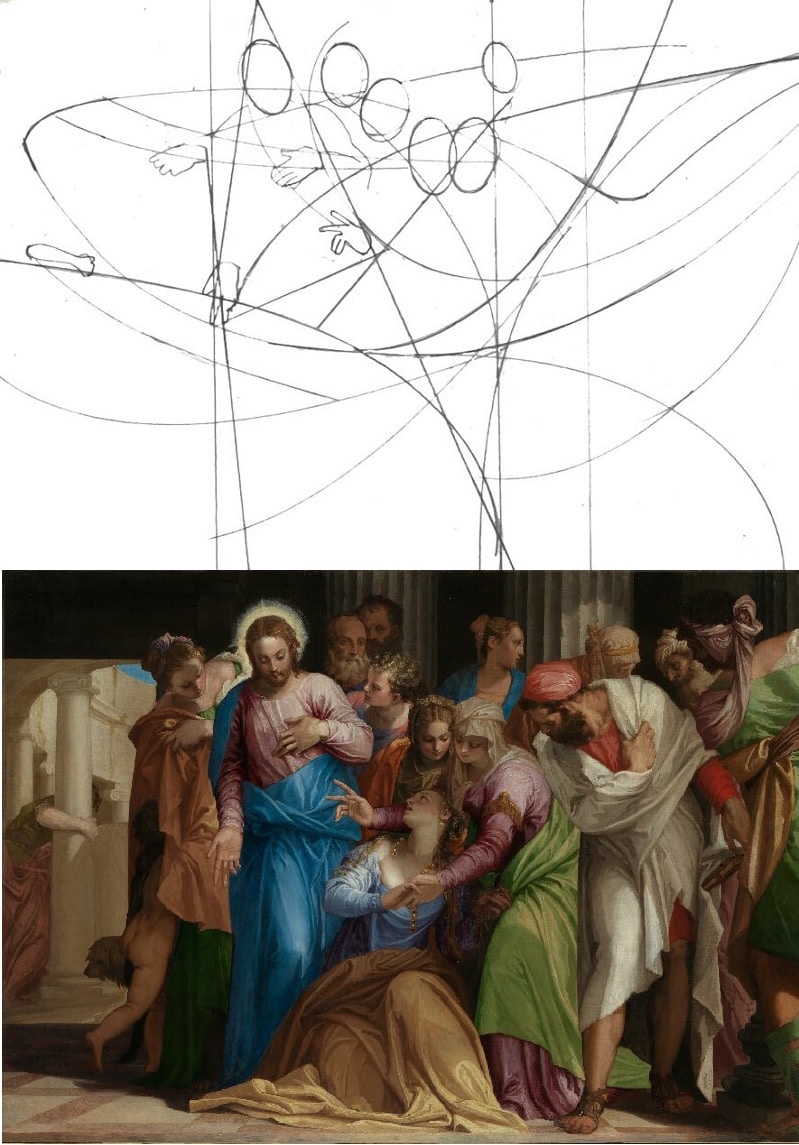
Everything in the picture coordinates and brings you to the cynosure of the charismatic figure of Christ, given further emphasis by the triangle formed by Christ and a female figure’s hands. That exists inside a further triangle formed by Christ’s leaning stance and Mary Magdalene’s left knee.
Nothing is wasted. Every curl of cloth plays its part in the jigsaw. Even the man in the background on the extreme left brings you back into the picture where his arm leads your eye up to the curve of columns.
There are three golden section divisions—Christ stands on one, there’s a background girl who catches your attention because she’s looking the other way, and there’s a further division denoted by the prominent figure in the right grouping. The alternating colour of the costumes also aids in moving you visually around the picture.
A true masterpiece.
If you’re interested in viewing more of Peter Nixon’s artwork—which was greatly inspired by Renaissance masters like Veronese—you can see our online collection of his works here or seek out his fantastic art book Peter Nixon: Music & Memory.

“Calliope – Mercury” (2014), Peter Nixon


